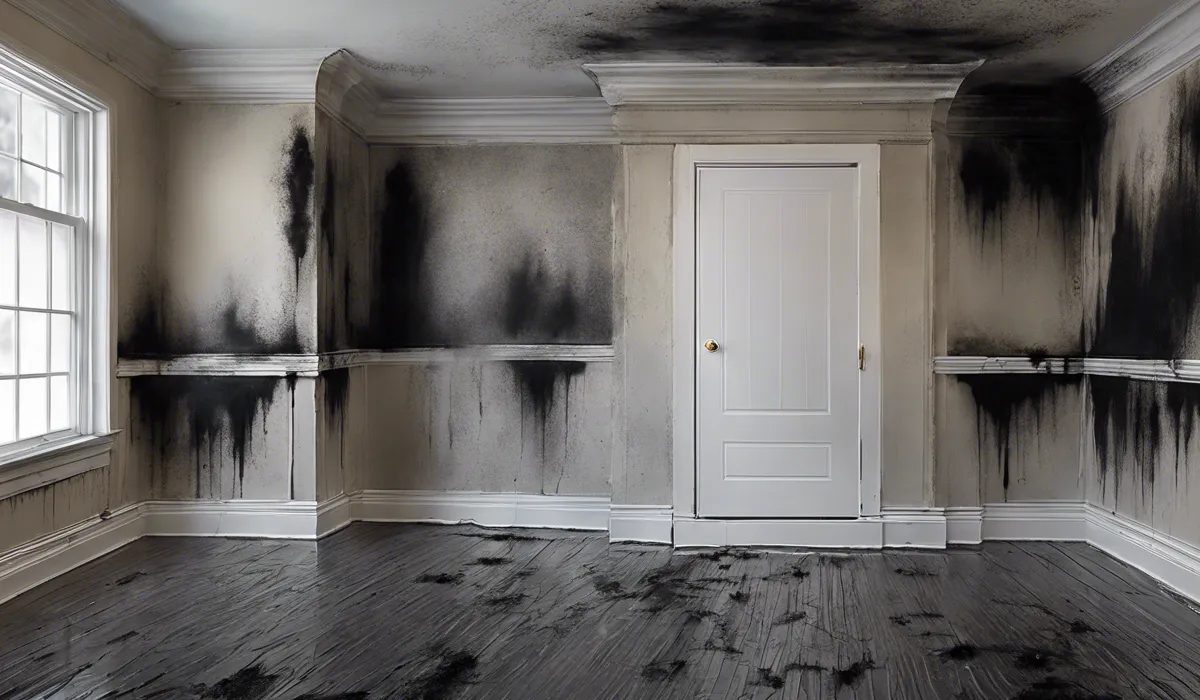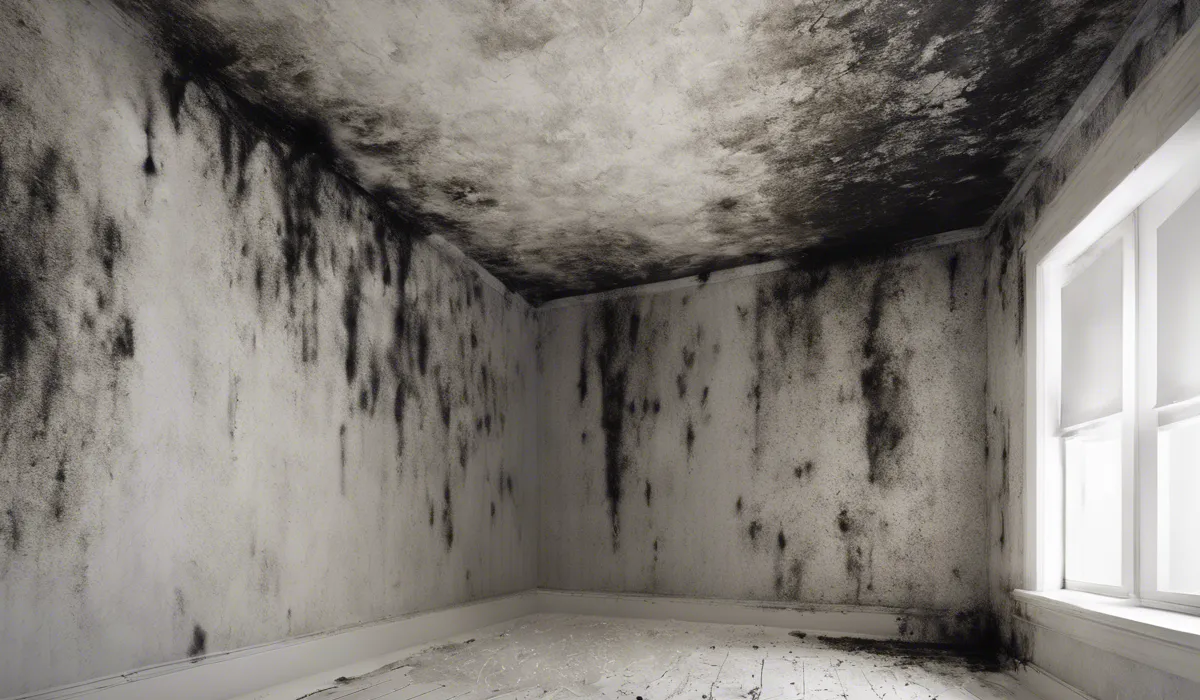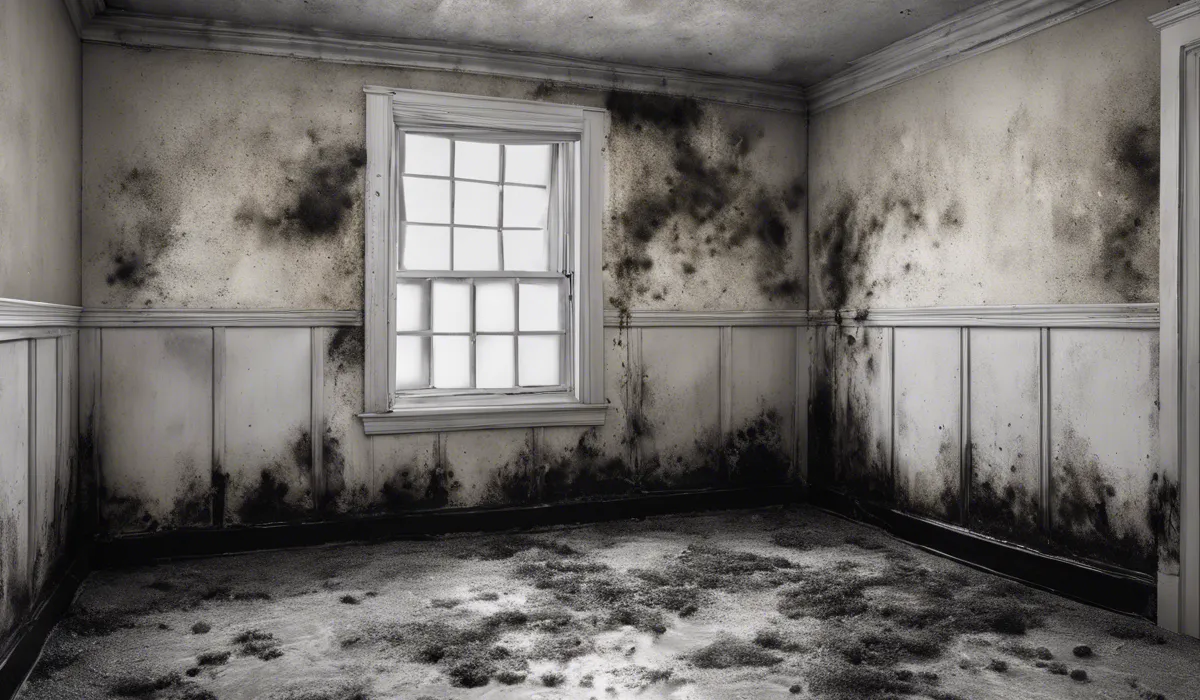Black mold grows due to moisture, warmth, and organic material availability. It thrives in damp environments with poor ventilation, often after water damage or in high-humidity areas. Materials like drywall and carpet provide food sources, fostering mold spores’ proliferation.
Causes of Black Mold Growth

Understanding Mold and Black Mold
Mold is a type of fungus that plays a crucial role in nature by breaking down dead organic matter.
However, when it grows indoors, it can become a problem. Black mold, scientifically known as Stachybotrys chartarum, is particularly notorious for its health risks. This mold appears as dark greenish-black patches and thrives in moist, warm conditions.
The Role of Moisture
Moisture is the lifeblood of black mold. Water leaks from pipes, high humidity levels, and condensation are the primary culprits for mold infestations.
These damp conditions create an ideal breeding ground for black mold to grow and spread. It’s important to identify and address any sources of moisture to prevent mold growth.
Organic Materials as a Food Source
Black mold has a preference for feeding on cellulose-rich materials. Common household items like wood, paper, and fiberboard provide the nutrients that mold needs to grow.
When these materials become damp or water-damaged, they become even more susceptible to mold infestation.
Impact of Poor Ventilation
Good air circulation is essential for preventing mold growth. Stagnant air in enclosed spaces can lead to increased humidity and moisture accumulation.
Ensuring that homes and buildings are well-ventilated helps to keep moisture levels in check and inhibits the growth of black mold.
Darkness and Mold Proliferation
Black mold doesn’t require sunlight to grow, which is why it’s often found in dark areas of buildings such as basements and attics.
Sunlight can inhibit mold growth, so areas that are consistently dark are more at risk of developing mold issues.
Temperature Preferences for Black Mold
While black mold can grow in a variety of temperatures, it prefers conditions that are warm.
The ideal temperature range for black mold proliferation is typically between 77°F and 86°F (25°C and 30°C), which are common indoor temperatures in many climates.
Health Risks Associated with Black Mold

Dangers of Mycotoxins
Black mold is known to produce mycotoxins, which are toxic substances that can pose serious health risks to humans and animals.
Mycotoxins can lead to a variety of health problems when people are exposed to them, either through inhalation, ingestion, or skin contact.
Respiratory Issues from Mold Exposure
Exposure to black mold can cause a range of respiratory issues. Symptoms may include coughing, wheezing, nasal congestion, and throat irritation.
In some cases, exposure can exacerbate conditions like asthma and lead to the development of more serious respiratory infections.
Allergic Reactions to Mold Spores
Many individuals experience allergic reactions to mold spores, which can include sneezing, runny nose, red eyes, and skin rash.
People with mold allergies may find their symptoms worsen when they are in environments where black mold is present.
Chronic Health Effects of Long-Term Exposure
Living in an environment with black mold over an extended period can lead to more severe health issues.
Chronic exposure to mold can cause persistent headaches, fatigue, and even depression. It is crucial to address mold issues as soon as they are detected to avoid long-term health complications.
Risks to Vulnerable Populations
Some populations are more vulnerable to the effects of black mold. Infants, the elderly, and those with weakened immune systems or chronic lung diseases are at a higher risk of experiencing adverse health effects from mold exposure.
Protecting these individuals from mold exposure is especially important.
Prevention and Remediation of Black Mold

Maintaining Low Indoor Humidity
Controlling indoor humidity is a key factor in preventing black mold growth. Using dehumidifiers, maintaining air conditioning systems, and using exhaust fans in bathrooms and kitchens can help keep humidity levels low and prevent mold from taking hold.
Fixing Leaks to Prevent Mold
Leaks in plumbing, roofs, windows, and other areas can lead to moisture problems that foster mold growth. It’s essential to repair leaks promptly to prevent water from accumulating and creating an environment where mold can thrive.
Ensuring Proper Ventilation
Adequate ventilation is necessary to prevent moisture buildup and to keep indoor air fresh.
Use of ventilation systems and regular opening of windows can help circulate air and reduce the chances of mold growth in homes and other buildings.
Cleaning and Maintenance to Keep Mold at Bay
Regular cleaning and maintenance of homes can prevent the accumulation of dust and organic debris that mold spores can feed on.
Simple actions like wiping down surfaces, especially in the kitchen and bathroom, can go a long way in mold prevention.
When to Seek Professional Mold Remediation
There are times when mold infestation is too severe for a DIY approach. Professional mold remediation may be necessary when there is extensive mold growth, when mold is inside heating and air conditioning systems, or when health symptoms indicate a serious problem.
Experts have the tools and know-how to safely remove mold and restore the environment to a safe condition.
FAQs About Black Mold Growth
What conditions are necessary for black mold to grow?
Black mold requires moisture, warmth, and organic materials to grow, and it thrives in damp, poorly ventilated environments.
Why does black mold often appear in bathrooms and basements?
Bathrooms and basements often have high humidity and poor ventilation, which are ideal conditions for black mold growth.
Can black mold grow on materials other than drywall and carpet?
Yes, black mold can grow on various organic materials, including wood, paper, and fabric, when moisture is present.
Does water damage always lead to black mold growth?
Water damage can lead to black mold growth if the area remains damp and is not properly dried and ventilated.
How can I prevent black mold from growing in my home?
Preventing black mold involves controlling moisture levels, ensuring proper ventilation, and promptly addressing water leaks or damage.
Final Thoughts
Black mold proliferation is primarily fueled by moisture, warmth, and the presence of organic materials.
It finds optimal conditions in damp, poorly ventilated spaces, often flourishing after water damage or in areas with high humidity. Everyday materials like drywall and carpet serve as nourishment, enabling mold spores to thrive and spread.
